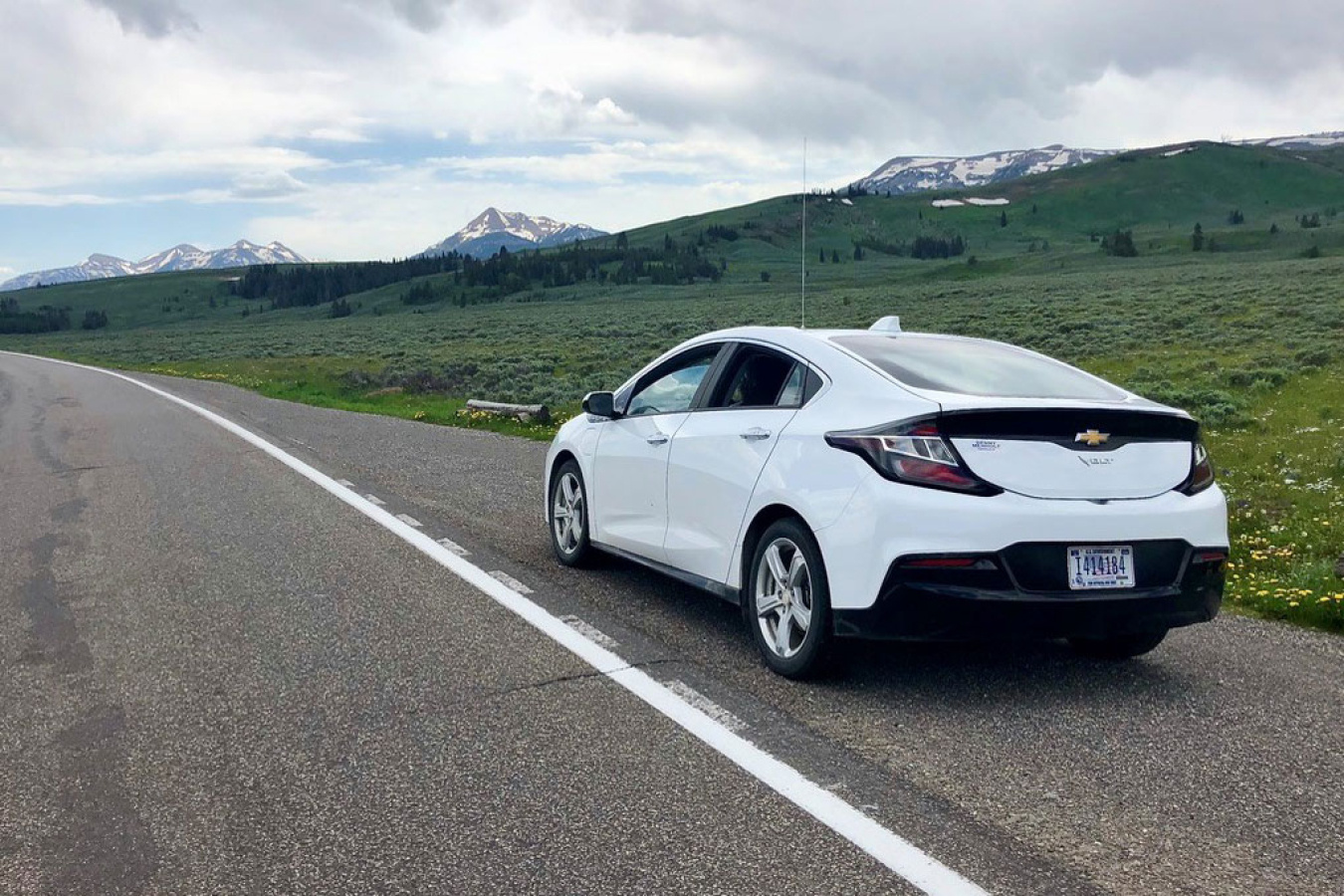
Even in the face of incredible setbacks due to catastrophic flooding that washed out roads and damaged power lines in June 2022, Yellowstone National Park pushed forward on its efforts to reduce carbon emissions by electrifying its vehicles. Through a Tiger Team partnership with the Federal Energy Management Program (FEMP) and the National Renewable Energy Laboratory (NREL), Yellowstone performed an electric vehicle supply equipment (EVSE) assessment throughout the summer of 2022. The assessment focused primarily on parking areas at the Mammoth Headquarters, including the administrative building, canteen, post office, and fleet garage.
The assessment began by using the Zero Emission Vehicle Planning and Charging (ZPAC) tool to identify vehicles that are the best candidates for fleet electrification based on the distances the vehicles typically travel, where they usually park, and whether an equivalent electric vehicle model will soon be available (ZPAC is available to federal fleets by emailing federal_fleets@hq.doe.gov). Of the 457 vehicles in Yellowstone's fleet, 146 light- and medium-duty vehicles are operated out of the Mammoth area and were also identified as good candidates for conversion to zero emission vehicles (ZEVs).
With the help of Yellowstone's fleet managers, facility managers, and electrician staff, NREL engineers examined the capacity and location of electrical infrastructure for the parking areas at Mammoth Headquarters. After considering several potential designs and many factors, including optimal trenching routes and electric transformer upgrade costs, the Tiger Team recommended Yellowstone install 42 Level 2 EVSE ports across three locations at Mammoth. To support the additional load from these charging stations, NREL engineers recommended upgrading a transformer and installing two new service panels.
As part of the assessment, the Tiger Team also researched issues that several national parks, including Yellowstone, are facing—such as how to properly store and maintain electric vehicles in cold temperatures and snowy conditions, particularly when they are not in use for several months.
With a successful Mammoth Headquarters EVSE assessment under their belts, Yellowstone fleet, facility, and energy managers can now use that experience as a roadmap for future EVSE assessments to support their fleet operating from other locations throughout this vast park.
Project Highlights
- As part of the EV adoption plan, 146 vehicles that operate from Mammoth were identified as good candidates for electrification.
- Of the five parking locations included in the EVSE assessment, the Tiger Team recommended three locations for EVSE deployment. In total, 42 new Level 2 EVSE ports, along with a transformer upgrade and two new service panels, were recommended to meet the near-term charging needs for the fleet.
Key Benefits
- The Tiger Team considered designs that would minimize trenching through hard landscapes, such as concrete, and utilize the existing electrical service, when possible, to reduce installation costs.
- The recommended service panel and transformer upgrades will enable and allow for increased EVSE capacity in future years once more of Yellowstone's fleet is ready to transition to ZEVs.
Impacts
- Transitioning Yellowstone's fleet from conventional combustion engine vehicles to electric vehicles will allow park visitors to enjoy better air quality and lower noise levels throughout the park, along with the added benefit of reduced carbon emissions from both the vehicles themselves as well as the transport of fuels to remote settings.
- Participating in this assessment provided Yellowstone staff with the knowledge and experience they need to perform additional EVSE assessments throughout Yellowstone.
- The Tiger Team helped Yellowstone staff answer questions regarding best practices for electric vehicle charging. This will help in their annual and long-term planning of an extensive and varied fleet.
Learn More
Read the full NREL report, Yellowstone National Park Makes Strides Toward Fleet Electrification.
NPS Point of Contact
Lynn Chan
Project Manager, Yellowstone National Park

